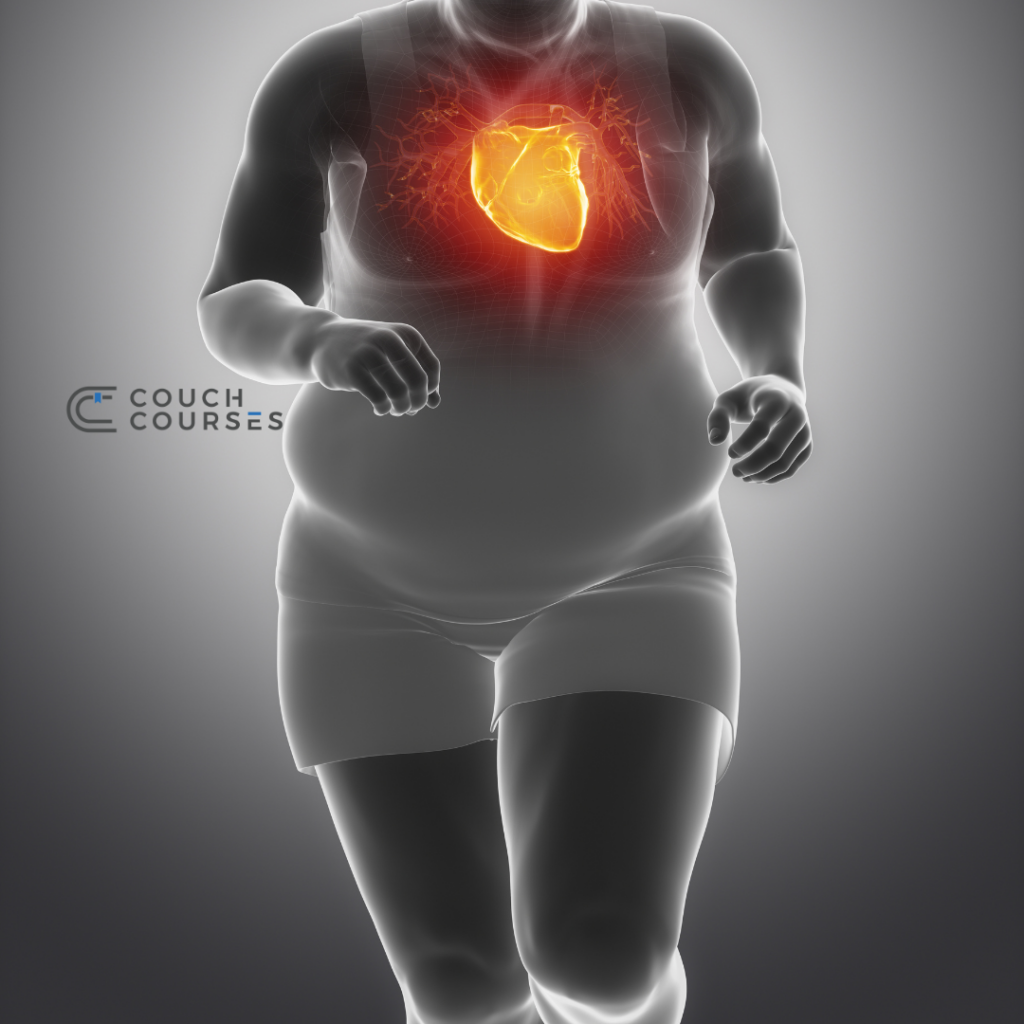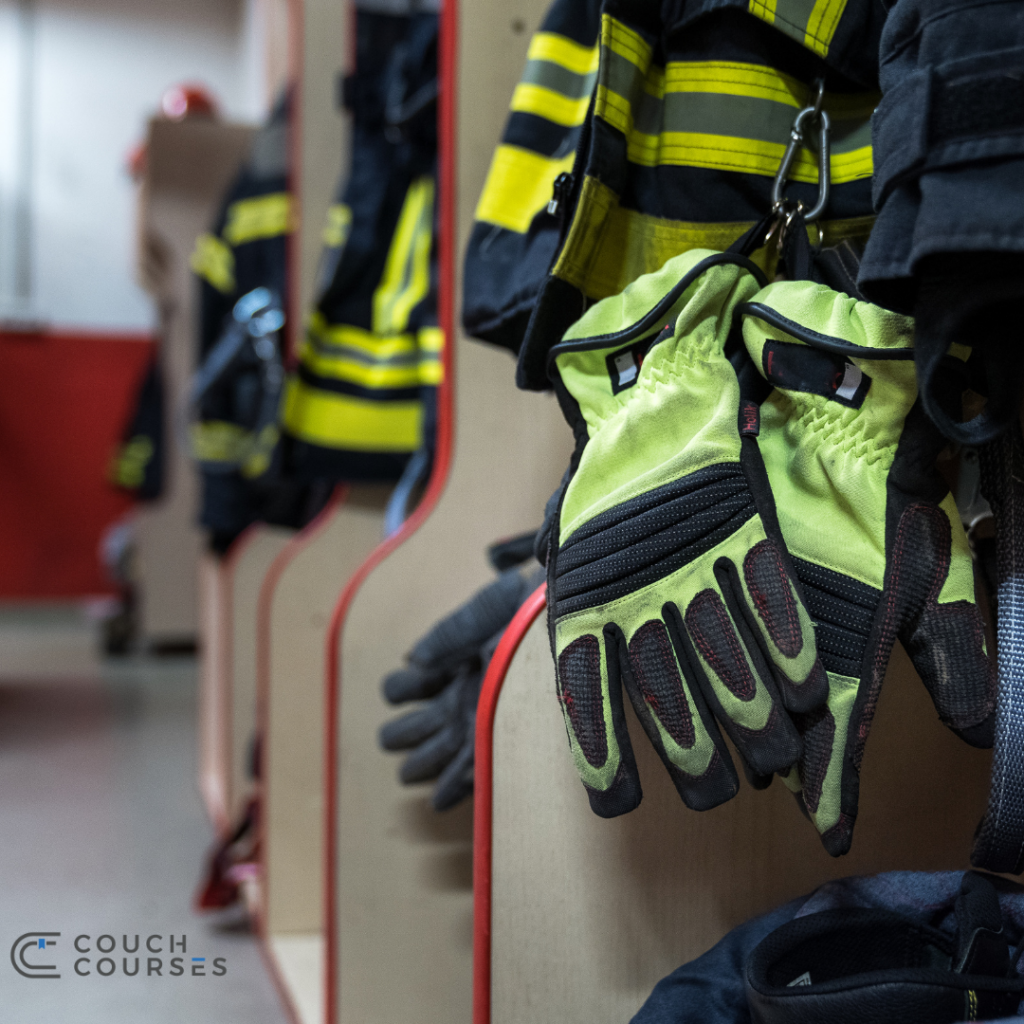Firefighter Wellness: How Important Is It?

Firefighter wellness – the hot topic.
Earlier this morning I read an article about another cardiac-related firefighter line-of-duty death. The firefighter was 53 years old. Ever-growing cancer and behavioral health issues in the fire service have center stage right now, and that’s for good reason; but we can’t forget about the other stuff, particularly cardiac issues.
Cardiac Issues
Cardiac-related deaths remain the largest single cause of fireground-related line-of-duty deaths (Smith, 2016; Smith, Haller, Korre, Sampani, Grossi Porto, Fehling, & Kales, 2019).
For every cardiac-related death in the fire service, there are 17 non-fatal events (Wimberly, 2016).
There are many contributors to cardiac-related, and other injury related issues in the fire service. Some of these issues are controllable, others not so much.

Some controllable contributors:
- Lack of adequate fitness levels (Smith, 2016).
- Smoking (Smith, 2016).
- Obesity, particularly in older firefighters (Bode, Mathias, Stewart, Moffat, Jack, & Smith, 2021). Better than 70% of firefighters in the US are overweight and more than 30% are considered obese (Jahnke, Poston, Haddock, & Jitnarin, 2017).
- Obesity is a major contributor to cardiac enlargement (Korre, Sampani, Porto, Farioli, Yang, Christiani, Lombardi, Kovacs, Mastouri, Abbasi, Steigner, Moffat, Smith, & Kales, 2016).
- Firefighter attitudes and behaviors (more on that later).
- Wearing the proper personal protective equipment.

Lack of adequate fitness levels and obesity are broad topics that in and of themselves, have many contributing factors. Firefighting typically involves shift work which will invariably impact the amount and quality of sleep firefighters get. Although many people think firefighters are lucky because “they get to sleep all night”, I don’t believe I ever had a truly restful sleep in a firehouse.
Firefighters on shift typically eat at least one meal together in the firehouse, and in many cases, it is not “heart-healthy”. Living by the adage “eat till you’re sleepy, sleep till you’re hungry” certainly is a major contributing factor to a lack of fitness, and cardiovascular disease.
Some uncontrollable contributors:
There are uncontrollable factors that impact cardiovascular health as well. To name a few:
- Wearing the proper personal protective equipment.
- Environmental factors such as heat and products of combustion.
- The need to go from sleeping to as many as 188 beats per minute (Wimberly, 2016) in a very short period.
Firefighters must wear specific PPE to enter dangerous environments. This is something that is non-negotiable and allows us to do what we do. Extreme heat, products of combustion, and hazardous chemicals are present when we are working. The gear we wear to protect us can be constricting, bulky, and heavy – placing an added strain on our bodies.
Also, firefighters have a disjointed workday schedule that is interrupted by emergency responses, making it difficult sometimes to get into a regular fitness routine.
The list of controllable and non-controllable factors is certainly larger than what I have outlined here, but we need to start somewhere.

How do we get started reducing cardiac related issues?
To attack this problem requires leadership from the top, middle, and bottom. A comprehensive firefighter wellness program will help prevent cardiac-related illness and death. A comprehensive wellness program will involve:
- Baseline physicals, and fitness assessments based on NFPA 1582.
- Comprehensive physical fitness program based on NFPA 1583.
- Mental health evaluations (in some cases).
- Proper personal protective equipment program (including cleaning of PPE).
- Diet/nutrition counseling.
- Cancer prevention policies/programs.
- Policies and procedures aimed at injury prevention.
The biggest way to improve the health and fitness of firefighters, including cardiovascular health, is thru the leadership. I have written about chief officers and firefighters doing a better job in not creating an “us versus them” mentality in their respective organizations. This is just one of many reasons why we need to rid the fire service of that mentality! How are you going to get there?
Path to reducing cardiac issues
Here are some ways to reducing cardiac related issues in the fire service.
Communicate
Labor and management need to get together and agree that a program is needed. It is not, or should not, be used as a tool to weed people out or get rid of non-desirables. It needs to be a program that makes each member a better firefighter that is more resilient moving forward. A better firefighter means a stronger organization better able to serve its citizens!
Plan
Both labor and management need to lay out a plan for a complete wellness program. Be creative and try and think strategically. A particular component may not be needed now but may be needed in the future. Do your research and find out what other people are doing. The plan needs to hold everyone in the organization accountable for their role in the plan. This should include a way to get unfit members back on track or separated from the organization.
Adjust attitudes
The attitude of all involved may need to be adjusted. If the chief is reluctant because of the potential pitfalls, i.e., someone fails, or it’s going to cost too much, they need to rethink the problem. What if the program saves a life? Preventing one heart attack may save my community up to a million dollars. For the firefighter who doesn’t think this is part of their job? They need to understand that their job requires a firefighter with good aerobic capacity and a sound mind. Play the long game and understand this is a marathon and not a sprint. Do it for your family.
Set goals
Goals should be specific, measurable, attainable, relevant, and in a timely manner (SMART). For example. Maybe the smart goal is to reduce the overall average of the department’s body mass index by 3% in one year. This is specific, measurable, attainable, relevant, and timely.
Sell the program
Sell the program internally and externally. Organizational members need to understand the importance of such a program and how it benefits them and the organization. The governing body needs to understand the importance of the program because they will need to fund it.
Evaluate
The program needs to be evaluated by both labor and management annually. Is what you are doing working? Does it need to be modified? Do we need to add something?
Introducing transformational leadership
What I have outlined looks easy, but let’s be honest, it won’t be. A program such as this may require transformational leadership in many organizations. Transformational leadership occurs when leaders influence subordinates to create win-win situations for the individual and the organization. The leaders in this case represent both labor and management.
Utilizing transformational leadership
A union executive board should be comprised of leaders and so should management. The first step needs to be open and honest communication. The program may need to be done in phases. Perhaps it is a multi-year implementation. If you are working toward a complete system, you are moving in the right direction. I would like to say the program we had was complete from day one, but it wasn’t. We hit a few roadblocks but kept moving. Unfortunately, we did not get to the physical fitness portion before I retired, but I know the new chief values it, as does the labor group. I have faith it will happen.
It is easy to look at a program like this and find reasons for it to fail, but we should focus on the reasons it should succeed. If you are a fire chief and look at a program like this to eliminate or get rid of certain people, you are in the wrong position. It is meant for improvement but not addition by subtraction. If you are a firefighter and think a program like this is “not what you signed up for”, ask yourself the following questions.
- If the fire chief issued me non-compliant gear or equipment or told me to drive an apparatus that clearly would not pass inspection, what would I do?
- If there are members of my team (or maybe even me), that cannot pass an NFPA 1582 physical, or who are not capable of self-rescue, or rescuing others, how is that different from using non-compliant gear or equipment, or operating an unsafe apparatus?
If you answered these questions honestly then you should be in favor of a comprehensive wellness program.
Our attitudes on firefighter wellness
I mentioned adjusting attitudes earlier. We need to adjust the way we approach not only firefighter wellness but also our view of the fire service and the fireground. My doctoral research found several causes for firefighter line-of-duty injuries. These injuries range from sprains and strains to cardiac arrest. One of the causes was obviously lack of proper fitness levels, but there were also firefighter behaviors. This may be taking too many chances, not wearing PPE, freelancing, etc. Sometimes this is the result of goal fixation. One study on why firefighters did not wear all their PPE was attributed to goal fixation (Maglio, Scott, Davis, Allen, & Taylor, 2016). Goal fixation occurs when we become so focused on achieving a task that we do whatever it takes to complete it.
- I can’t see well during the overhaul because of my mask so I remove it.
- I have no tactile feeling with these bulky gloves, so I remove them.
- We need to put this fire out, I’ll go to rehab later, I can do another bottle.
How many times have all of us engaged in unsafe behaviors because of goal fixation, even outside of our work as a firefighter? While these have no direct correlation to a wellness program, they do speak to our collective mindset. We need to change our overall approach to one of a proactive wellness attitude. There is no room for the “the fire service has become wussified”, or the “I fight what you fear” mentality, or even the “I was a firefighter when it was fun (riding on the tailboard)”.
My experience on cardiac issues
Cardiac issues in the fire service are nothing new, but they do typically hit home hard for me. I recently retired as a fire chief because of cardiac-related issues. Like many of you out there, I had no idea and thought I was doing the right things, and for the most part, I was. Yet I was literally a heartbeat away from a fatal heart attack. Although most of my focus here was on cardiac-related issues, a comprehensive wellness approach adds much more value than just reducing the risk of cardiovascular disease or events.
Takeaway
I think the fire service needs all of us working together to make it safer and more productive for our customers. Labor and management need to come together to make this happen more often.
I know I’m painting with a broad brush, and many places are already doing this. If you are, good for you and your organization. Help spread the good word. If you are not, and you know who you are, take a good hard look at yourself, your organization, and your coworkers and ask yourself how to take the first step.
References
Bode, E. D., Mathias, K. C., Stewart, D. F., Moffatt, S. M., Jack, K., & Smith, D. L. (2021). Cardiovascular disease risk factors by BMI and age in United States firefighters. Obesity 29, 1186-1194
Burns, J. M. (1978). Leadership. Harper & Row.
Jahnke, S. A., Poston, W. C., Haddock, C. K., & Jitnarin, N. (2017). Health, wellness, and readiness in the fire service. International Fire Service Journal of Leadership & Management, 11, 7-13.
Korre, M., Sampani, K., Porto, L. G. G., Farioli, A., Yang, Y., Christiani, D. C., Christophi, C. A., Lombardi, D. A., Kovacs, R. J., Mastouri, R., Abbasi, S., Steigner, M., Moffatt, S., Smith, D. L., & Kales, S. N. (2016). Cardiac enlargement in US firefighters: Prevalence estimates by echocardiography, cardiac magnetic resonance, and autopsies. Journal of Clinical & Experimental Cardiology, 7(7), 1-6.
Maglio, M. A., Scott, C., Davis, A. L., Allen, J. A., & Taylor, J. A. (2016). Situational pressures that influence firefighters’ decision making about personal protective equipment: A qualitative analysis. American Journal of Health Behavior, 40(5), 555-567.
Smith, D. (2016). Understanding and preventing sudden cardiac events in the fire service. International Fire Service Journal of Leadership, 10, 51-57.
Wimberly, P. (2016). Improving cardiovascular risk profiles in firefighters. Nursing and Health, 4(3), 32-35.
Recommendations
- Florida Health and Safety Officer – Course
- Florida Incident and Safety Officer – Course
- Chief Officer: Us vs Them Mentality – Blog
- Courage to be Safe – Course
- Firefighter Fitness: Where to Begin? – Blog
- Firefighter Fitness: Understanding the Phases of Fitness – Blog





